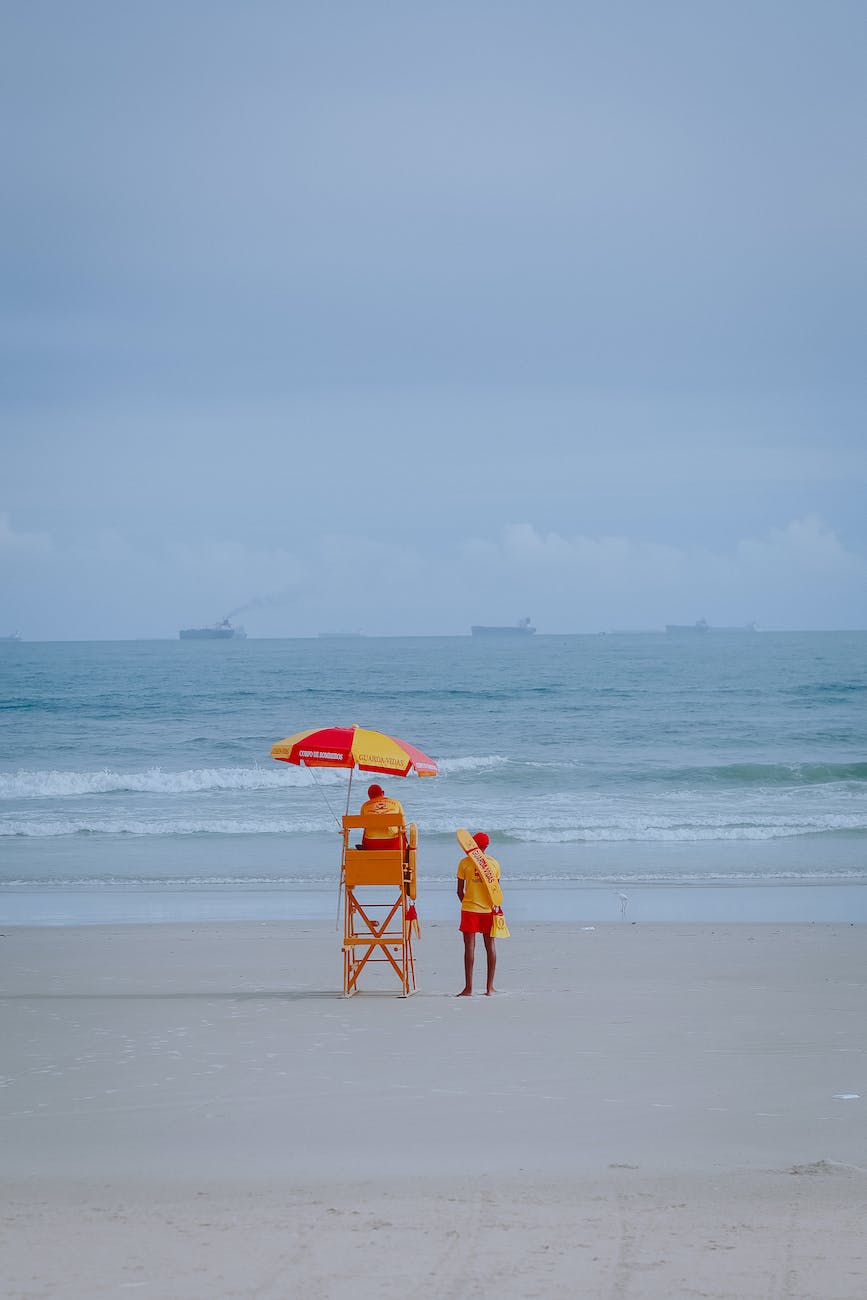Lifeguarding is more than just scanning the water and enforcing pool rules — a profession demands vigilance, skill, and adaptability. Weather changes, whether progressive or sudden, play a basic role in the day-to-day responsibilities of lifeguards. From singing summer days to surprising storms, lifeguards should be prepared to adjust to different environmental challenges.
This article digs into how weather impacts lifeguarding and investigates the importance of preparation, adaptability, and getting proper training, like lifeguard certification, to succeed in this vital role.
The Role of Weather in Aquatic Safety
Weather conditions influence each aspect of aquatic environments. Whether it’s an ocean beach, a lake, or a community pool, lifeguards are entrusted with safeguarding lives under fluctuating weather patterns. Each season and kind of weather condition presents unique challenges.
- Sunny Days and Heatwaves: Bright sunny days draw in more swimmers, establishing a bustling environment where lifeguards need to monitor bigger crowds. However, prolonged exposure to the sun can prompt heat-related illnesses like heat weariness or dehydration for swimmers as well as for lifeguards themselves.
- Rainy and Overcast Conditions: Shady weather frequently prompts decreased perceivability, making it harder for lifeguards to distinguish potential emergencies. Additionally, downpour builds the risk of slips and falls around pool decks.
- Storms and Lightning: Thunderstorms are among the most dangerous weather occasions for lifeguards to make due. Lightning represents an immediate threat to swimmers and staff, requiring quick action to empty the water and ensure everybody’s safety.
- Seasonal Shifts: Changes between seasons bring challenges like fluctuating water temperatures, stronger rip currents at beaches, and differing swimmer ways of behaving. Lifeguards should stay caution to these progressions to ensure public safety.
Lifeguarding in Extreme Weather Conditions
Extreme weather occasions are becoming progressively incessant because of climate change. Lifeguards, especially those positioned at open-water locations, face elevated risks and responsibilities in these scenarios.
- Heatwaves: With rising global temperatures, heatwaves are becoming more intense and continuous. Lifeguards should remain hydrated, wear suitable sun protection, and monitor the two swimmers and themselves for signs of heat-related conditions.
- High Winds and Rip Currents: On blustery days, rip currents at beaches can develop further, representing a significant risk to swimmers. Lifeguards should be knowledgeable in identifying and responding to these hazardous conditions.
- Sudden Storm Surges and Flash Flooding: Coastal lifeguards frequently battle with sudden storm surges, which can make a calm day on the beach perilous in no time. Flash flooding at lakes or rivers also requires immediate action to empty swimmers and prevent accidents.
- Cold Weather and Hypothermia Risks: In colder months, lifeguards might oversee indoor pools or frigid outdoor environments. Cold water expands the risk of hypothermia for swimmers, especially the people who overestimate their abilities or remain in the water excessively long.
Tools and Techniques for Adapting to Weather Changes
To handle weather-related challenges, lifeguards depend on training, preparation, and admittance to the right tools.
- Training and Lifeguard certification: A strong foundation in lifeguarding starts with proper training. Lifeguard certification programs show essential skills like CPR, first aid, and emergency response, which are all basic when managing weather-prompted emergencies. These programs also cover situational awareness, empowering lifeguards to effectively expect and respond to weather changes.
- Monitoring Weather Conditions: Numerous lifeguards use technology to remain refreshed on weather forecasts and admonitions. Real-time weather following applications and tools help them expect potential hazards and make proactive strides.
- Clear Communication Systems: During weather-related emergencies, effective communication is key. Lifeguards should utilize whistles, flags, or Dad systems to alarm swimmers about hazards and uphold safety measures.
- Emergency Action Plans (EAPs): Lifeguards are trained to execute Emergency Action Plans customized to their location. These plans represent scenarios like lightning strikes, strong winds, or sudden temperature drops, ensuring that all staff individuals know their roles during a crisis.
The Mental and Physical Resilience of Lifeguards
Adapting to weather changes requires lifeguards to keep up with both mental and physical resilience.
- Physical Stamina: Long shifts in the sun, weighty downpours, or wind request peak physical fitness. Lifeguards should remain in top shape to perform rescues in testing conditions, whether it’s swimming against strong currents or giving medical help in unfavourable weather.
- Mental Toughness: Weather changes frequently bring unpredictable situations, and lifeguards need to stay cool and focused under pressure. Quick decision-making and staying created during emergencies are signs of an effective lifeguard.
- Teamwork and Collaboration: Lifeguards seldom work alone. A strong group dynamic ensures proficient responses to weather-related challenges. Regular bores and practice meetings help teams build trust and improve their coordination.
Educating the Public on Weather Awareness
Public education is a crucial aspect of lifeguarding. Numerous accidents can be prevented if swimmers understand the risks related to specific weather conditions. Lifeguards play an urgent role in bringing issues to light.
- Flag Systems and Signage: Beaches and pools frequently use a variety of coded flags to show water safety levels. Lifeguards should ensure these systems are apparent and understood by the public.
- Pre-Swim Briefings: A quick briefing about weather conditions and potential risks can go a long way in preventing emergencies.
- Community Outreach: Lifeguards can engage in community programs to educate locals about water safety during different weather conditions.
Lifeguarding and Climate Change
As climate change prompts more unpredictable and extreme weather patterns, the role of lifeguards becomes significantly more basic. Rising sea levels, stronger storms, and prolonged heatwaves are factors that lifeguards should consider when planning for the future.
To address these challenges, lifeguards and their governing organizations should prioritize ongoing training and remain informed about developing weather patterns. Refreshed lifeguard certification courses should remember modules for climate resilience, helping lifeguards adjust to the changing demands of their profession.
Final Word: Weather Awareness as a Lifeguard’s Essential Skill
Lifeguarding is a unique profession that requires steady vigilance and adaptability, especially when managing unpredictable weather. From sunny days to serious storms, weather conditions significantly impact the responsibilities of lifeguards.
Proper training, like lifeguard certification, and support from organizations like the American Lifeguard Association ensure that lifeguards are prepared to protect lives in any environment. By staying educated and proactive, lifeguards keep on filling in as the first line of defense in aquatic safety, regardless of the weather.

